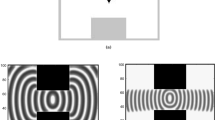Abstract
A hybrid model, combining a Cellular Automaton (CA) and a multi-agent system, was proposed to mimic the computation abilities of the plasmodium of Physarum polycephalum. This model was implemented on software, as well as, on hardware, namely on a Field Programmable Gate Array (FPGA). The specific ability of the P. polycephalum simulated here is given in brief, also bringing attention to the approximation of a Kolmogorov-Uspensky machine (KUM), an alternative to the Turing machine. KUM represent data and program by a labeled indirected graphs and a computation is performed by adding/removing nodes/edges. The proposed model implementation is taking full advantage of the inherent parallel nature of automaton networks, and CA, as a result of the mapping of the local rule to a digital circuit. Consequently, the acceleration of the computation for the hardware implementation, compared to the software, is as high as 6 orders of magnitude.
Access this chapter
Tax calculation will be finalised at checkout
Purchases are for personal use only
Similar content being viewed by others
References
Adamatzky, A.: Physarum Machines: Computers From Slime Mould, vol. 74. World Scientific, Singapore (2010)
Nakagaki, T., Yamada, H., Toth, A.: Path finding by tube morphogenesis in an amoeboid organism. Biophys. Chem. 92(1–2), 47–52 (2001)
Adamatzky, A.: Advances in Physarum Machines: Sensing and Computing with Slime Mould, 1st edn. Springer, Heidelberg (2016). https://doi.org/10.1007/978-3-319-26662-6
Nakagaki, T., Yamada, H., Tóth, Á.: Intelligence: maze-solving by an amoeboid organism. Nature 407(6803), 470 (2000)
Adamatzky, A.: Slime mold solves maze in one pass, assisted by gradient of chemo-attractants. IEEE Trans. Nanobiosci. 11(2), 131–134 (2012)
Adamatzky, A.: Developing proximity graphs by physarum polycephalum: does the plasmodium follow the toussaint hierarchy? Parallel Process. Lett. 19(01), 105–127 (2009)
Aono, M., Zhu, L., Hara, M.: Amoeba-based neurocomputing for 8-city traveling salesman problem. Int. J. Unconv. Comput. 7(6), 463–480 (2011)
Tsuda, S., Aono, M., Gunji, Y.P.: Robust and emergent physarum logical-computing. BioSystems 73(1), 45–55 (2004)
Adamatzky, A.: Bioevaluation of World Transport Networks. World Scientific, Singapore (2012)
Evangelidis, V., Tsompanas, M.A., Sirakoulis, G.C., Adamatzky, A.: Slime mould imitates development of Roman roads in the Balkans. J. Archaeol. Sci. Rep. 2, 264–281 (2015)
Tsompanas, M.A.I., Mayne, R., Sirakoulis, G.C., Adamatzky, A.I.: A cellular automata bioinspired algorithm designing data trees in wireless sensor networks. Int. J. Distrib. Sens. Netw. 11(6), 471045 (2015)
Tero, A., et al.: Rules for biologically inspired adaptive network design. Science 327(5964), 439–442 (2010)
Jones, J.: From Pattern Formation to Material Computation: Multi-agent Modelling of Physarum Polycephalum, vol. 15. Springer, Heidelberg (2015). https://doi.org/10.1007/978-3-319-16823-4
Gunji, Y.P., Shirakawa, T., Niizato, T., Yamachiyo, M., Tani, I.: An adaptive and robust biological network based on the vacant-particle transportation model. J. Theor. Biol. 272(1), 187–200 (2011)
Tsompanas, M.A.I., Sirakoulis, G.C.: Modeling and hardware implementation of an amoeba-like cellular automaton. Bioinspiration Biomim. 7(3), 036013 (2012)
Tsompanas, M.-A.I., Sirakoulis, G.C., Adamatzky, A.: Cellular automata models simulating slime mould computing. In: Adamatzky, A. (ed.) Advances in Physarum Machines. ECC, vol. 21, pp. 563–594. Springer, Cham (2016). https://doi.org/10.1007/978-3-319-26662-6_27
Adamatzky, A.: Physarum machine: implementation of a Kolmogorov-Uspensky machine on a biological substrate. Parallel Process. Lett. 17(04), 455–467 (2007)
Adamatzky, A., Jones, J.: Programmable reconfiguration of physarum machines. Nat. Comput. 9(1), 219–237 (2010)
Kolmogorov, A.N.: On the concept of algorithm. Uspekhi Mat. Nauk 8(4), 175–176 (1953)
Kolmogorov, A.N., Uspenskii, V.A.: On the definition of an algorithm. Uspekhi Mat. Nauk 13(4), 3–28 (1958)
Blass, A., Gurevich, Y.: Algorithms: a quest for absolute definitions. Bull. EATCS 81, 195–225 (2003)
Jones, J.: Approximating the behaviours of Physarum polycephalum for the construction and minimisation of synthetic transport networks. In: Calude, C.S., Costa, J.F., Dershowitz, N., Freire, E., Rozenberg, G. (eds.) UC 2009. LNCS, vol. 5715, pp. 191–208. Springer, Heidelberg (2009). https://doi.org/10.1007/978-3-642-03745-0_23
Author information
Authors and Affiliations
Corresponding author
Editor information
Editors and Affiliations
Rights and permissions
Copyright information
© 2018 Springer Nature Switzerland AG
About this paper
Cite this paper
Madikas, M., Tsompanas, MA., Dourvas, N., Sirakoulis, G.C., Jones, J., Adamatzky, A. (2018). Hardware Implementation of a Biomimicking Hybrid CA. In: Mauri, G., El Yacoubi, S., Dennunzio, A., Nishinari, K., Manzoni, L. (eds) Cellular Automata. ACRI 2018. Lecture Notes in Computer Science(), vol 11115. Springer, Cham. https://doi.org/10.1007/978-3-319-99813-8_7
Download citation
DOI: https://doi.org/10.1007/978-3-319-99813-8_7
Published:
Publisher Name: Springer, Cham
Print ISBN: 978-3-319-99812-1
Online ISBN: 978-3-319-99813-8
eBook Packages: Computer ScienceComputer Science (R0)




